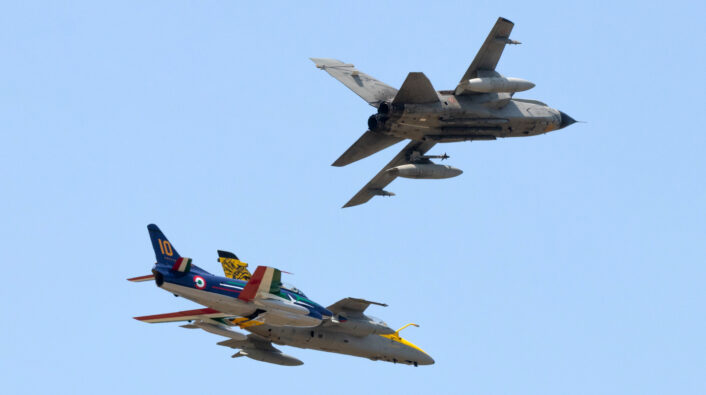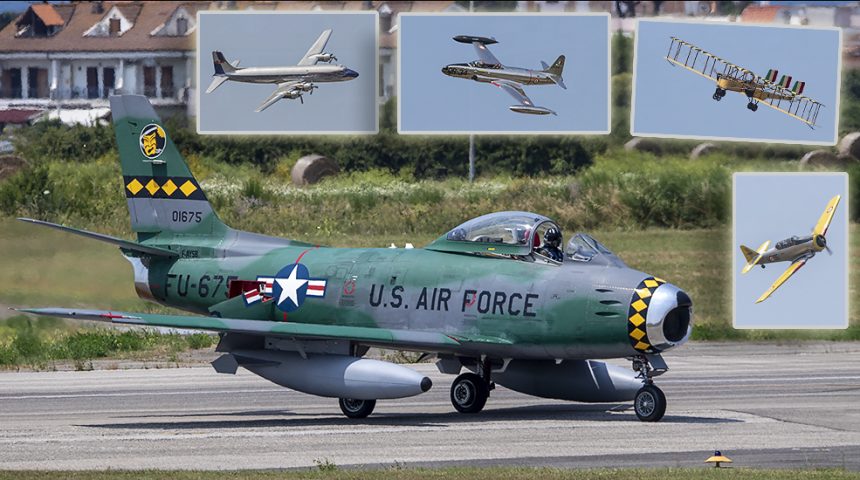Many aircraft, both from Italy and abroad, were invited to take part in the airshow to represent all types which served with the Aeronautica Militare.
As we reported few days ago, last week the Italian Air Force celebrated its 100th anniversary with a memorable airshow which paid homage to the service’s history. Both the flight and static displays included almost all of the aircraft that served in Italy since the early days of aviation, with many of them being a very important part of the history of the Aeronautica Militare, like the F-104 that was its principal asset for over 40 years.
While some aircraft formerly belonging to the Italian Air Force have been bought by private collections, restored and brought back to airworthy conditions, others are only available as museum static displays. Because of this, a number of airworthy aircraft types were invited from abroad to take part in the flight displays.
In this second part of our report from the airshow, we will see in chronological order each of the historic aircraft that flew at Pratica di Mare air base and discuss their role in the Italian military aviation.
Visualizza questo post su Instagram
Caproni Ca.3 (1917)
The Caproni Ca.3 replica, registration I-ZANA and belonging to the Jonathan Collection, is the only WWI bomber in flight conditions and the largest Italian amateur-built aircraft. Conceived in 1913 by Gianni Caproni (1886-1957) in response to the operational concepts of Giulio Douhet (1869-1930), the Ca.3 was one of the largest aircraft of his time. It was a tail beam biplane with central nacelle for the crew, propelled by three engines with a total power ranging from 260 HP (on the prototype) to 450 HP (on the latest production series).
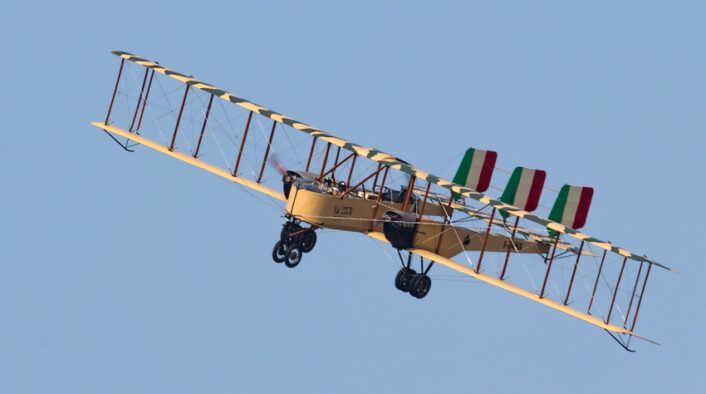
SPAD S.XIII (1917)
Together with the Caproni Ca.3 bomber, visitors were able to see in flight another well known aircraft of the Jonathan Collection, the replica of the SPAD S.XIII piloted by WW1 ace Francesco Baracca. The French-made biplane fighter aircraft was one of the first ones to be used after the foundation of the Regia Aeronautica in 1923, which took over the aircraft delivered since 1917 to the Corpo Militare Aeronautico.
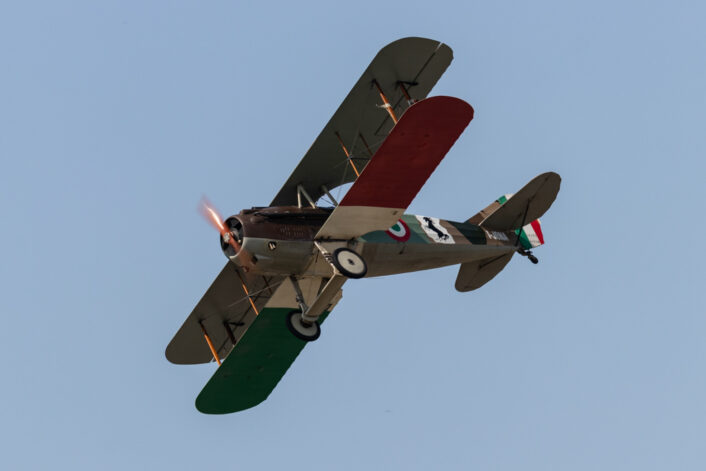
P-38 Lightning (1946)
The P-38 Lightning twin-engine air superiority fighter was one of the many aircraft donated by the United States to the new Aeronautica Militare after WW2. The aircraft served in Italy in many roles, including reconnaissance, until it was retired in 1956. Today there are no surviving Italian P-38s, as they were either destroyed in accidents or demolished, so the P-38 of The Flying Bulls was invited and flew during the morning displays at Pratica di Mare.
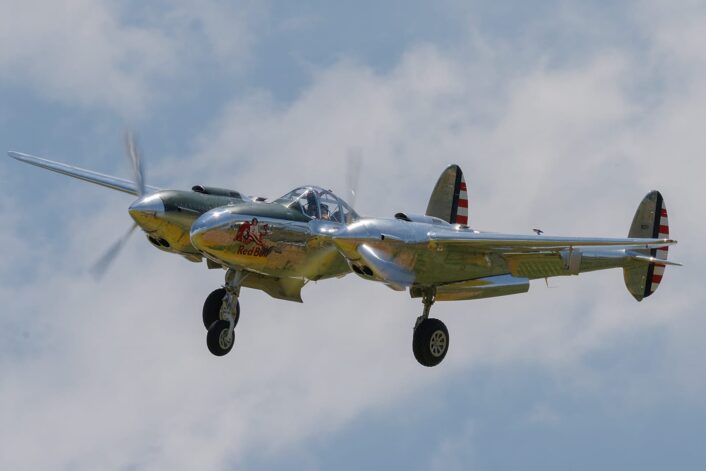
Spitfire (1947)
The Spitfire Mk. V was one of the aircraft types donated by the UK and US to supplement Italian fighters after the armistice in 1943. These 53 aircraft were tropicalized RAF veterans from the operations in North Africa and were followed after the war by 143 Spitfire Mk. IXs, which served until 1952. The only surviving Italian Spitfire is exhibited at the Italian Air Force Museum in Vigna di Valle, and a Battle of Britain veteran flew instead during the airshow, the Spitfire Mk. V EE602/G-IBSY.
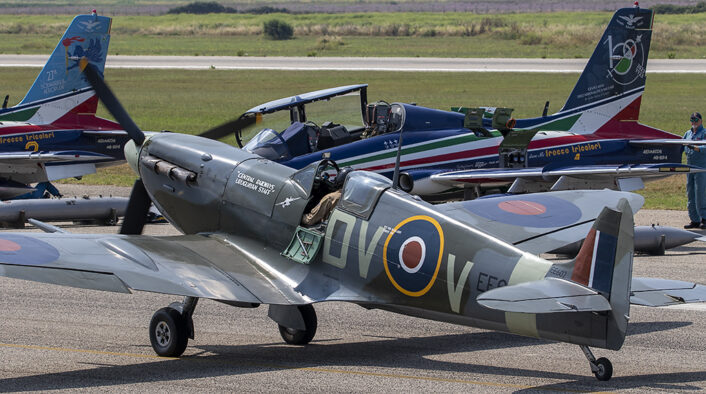
P-51 Mustang (1947)
The P-51D Mustang served in Italy after WW2, with 170 delivered by the US since 1947 as part of the Mutual Defense Assistance Program. Compared to other donated aircraft, the Mustangs were delivered as new, completely overhauled and with less than 500 flight hours. The aircraft were retired in 1953 and the only one surviving is in the ItAF Museum. The airshow featured the world’s only P-51 Mustang formation aerobatic team, the Horsemen Flight Team, which flew three P-51s, “The Hun Hunter / Texa””, “Berlin Express” and “Miss Stress”.
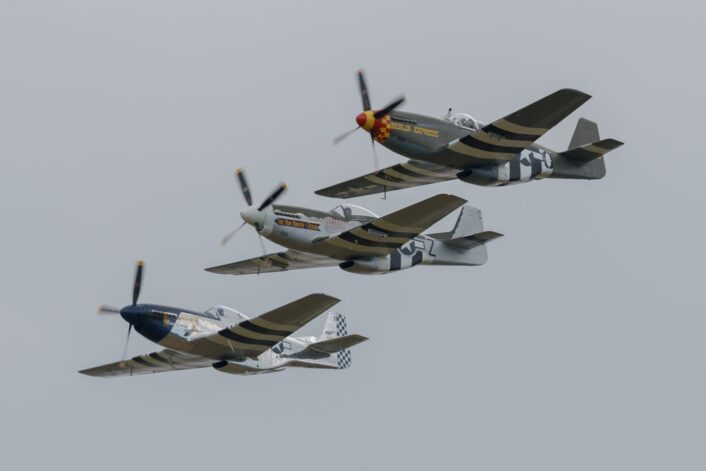
G.46 (1948)
The G.46 has a special place in the Italian aviation history, being the first aircraft built by FIAT immediately after WW2 and the first entirely metallic aircraft to enter service in the ItAF. The aircraft was dismissed in the late ‘50s, with many obtained by aeroclubs but later scrapped because they were too expensive to maintain at the end of their useful life. Three of them, however, were bought before they could be scrapped and, after restoration, are still flying today. During the airshow, the G.46s flew an impressive formation display and one of them took part also in the Legend Formation.
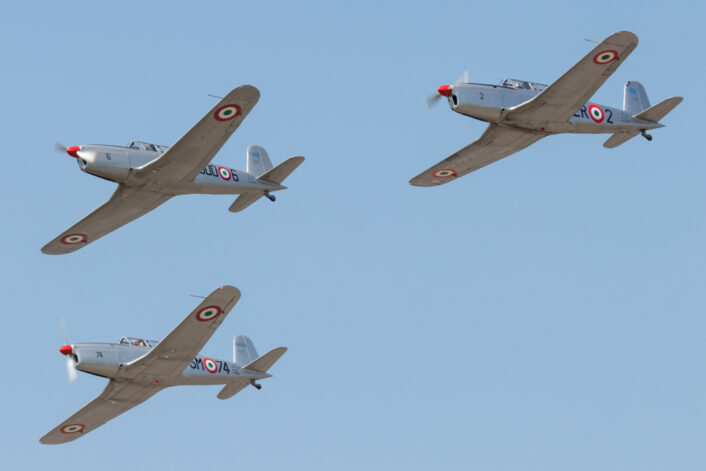
T-6 Texan (1949)
The iconic T-6G Texan has been the cornerstone of the Italian training after WW2, with 238 aircraft serving from 1949 to 1980. The Texan seen at Pratica di Mare was bought as scrap from a theme part in the late ‘90s and underwent a lengthy restoration that resulted in the “Pilot Maker” (as the T-6 is often dubbed in the aviation world) returning to fly after 25 years on the ground. Remarkably, the pilot of the T-6G was the former Chief of Staff of the Aeronautica Militare, General (Retired) Alberto Rosso.
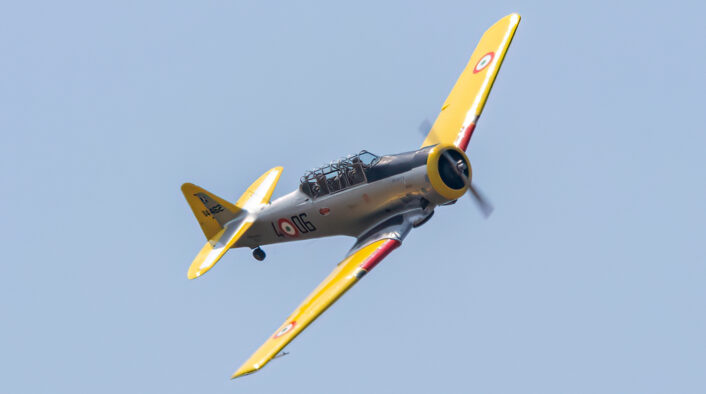
P-47 Thunderbolt (1950)
After WW2 the Italian Air Force operated 75 P-47D Thundebolts, which were received from US stocks in Germany to replace the Spitfire. After a shot and troubled service, the Thunderbolts were given back to the US and replaced by the F-84. Only one P-47 remained in Italy, shown for years at the ItAF Museum and now stored waiting for restoration. The P-47D “Nellie”, based at Duxford, flew during the airshow at Pratica di Mare.
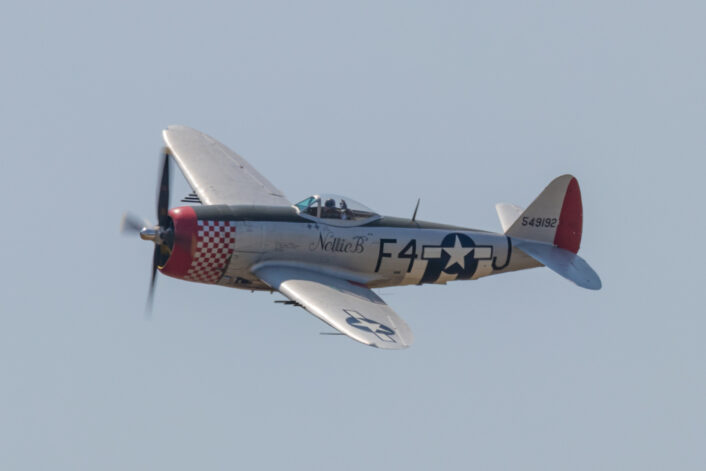
T-33 (1952)
The T-33 Shooting Star is a twin-seater variant of the P-80, the first US jet fighter. The Italian Air Force operated from 1952 to 1982 a fleet of 60 T-33A and 14 RT-33A used for photographic reconnaissance. After being replaced in the training role by the G-91T, the T-33 was also used as target towing aircraft and as aggressor against the F-86K and F-104. The Top Gun Voltige team, based in France, took part in the flight displays during the airshow with a Canadian-built CT-133 in a polished French livery.
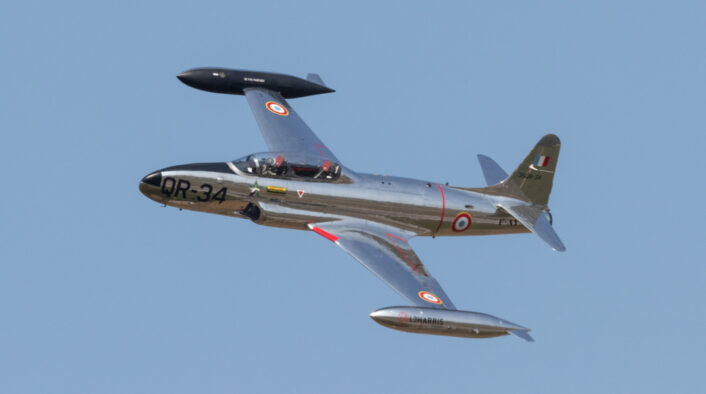
F-86 (1955)
The Italian Air Force operated 179 CL-13s, the Canadian variant of the F-86E Sabre, from 1955 to 1973. The jet, which rapidly became a symbol of the new military jet era, was one of the first jet to become operational across the world. Italy also operated in the same timeframe a fleet of 63 F-86K, a simplified F-86D for the European market. The Sabre that flew at the airshow, both solo and in a heritage formation, is also a CL-13, built for Germany and now based in France, which has been repainted in a USAF livery.
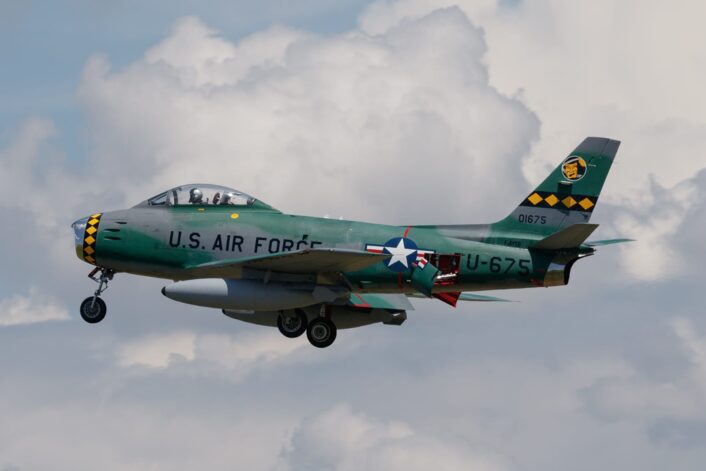
Visualizza questo post su Instagram
G.91 (1959)
Another piece of the Italian Air Force’s history, last week the Fiat G.91R flew again for the first time since it was retired in 1992. The aircraft, type only airworthy airframe, is the former G.91R/1A MM (Matricola Militare/ Military Serial) 6305 (c/n 169), which now sports the civilian registration I-AMIC. The airframe was acquired in 2009 by Catellani, with the restoration started in 2021 at Piacenza Air Base. The G.91 is an important part of the history of the Aeronautica Militare, with a 35-year service life and 756 aircraft built.
Interestingly, the aircraft was escorted by three Eurofighters, two Tornados and by the Frecce Tricolori display team, on its way back to Piacenza after the airshow.
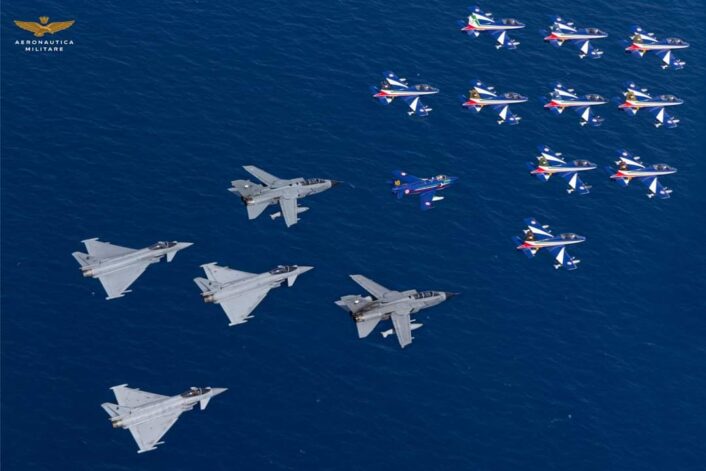
MB-326 (1961)
The MB-326 was for many years the basic jet trainer of the Aeronautica Militare, with the one seen in the airshow serving from 1962 to 1989. This specific aircraft, which throughout the years was upgraded to the armed MB-326E variant, was assigned to the flight school until 1985, before being used as liaison aircraft by the 9° and 6° Stormo. Sold to a private airfield as static exhibit, the aircraft spent 20 years exposed to the elements before its current owner and pilot, Renzo Catellani, bought it and began the restoration that took the MB-326E back to the skies in 2012.
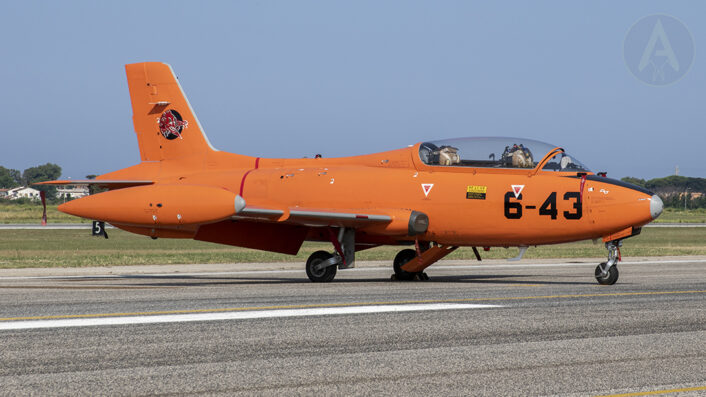
Another aircraft bought and restored by Catellani’s team is the MB-326K, the armed single seater variant of the MB-326 trainer which was designed with a focus on air-to-ground attack. This specific aircraft is not entirely the result of a restoration, as it can be considered almost a new aircraft, since it was obtained from an airframe whose assembly was never completed. The MB-326K flew again for the first time in 2019, painted as another aircraft of the same type that was assigned to the Reparto Sperimentale Volo (RSV) and piloted by retired ItAF Gen. Maurizio Lodovisi, who is actually a former RSV test pilot involved in the MB-326K testing in the ‘80s. Lodovisi also flew the G-91during the airshow.
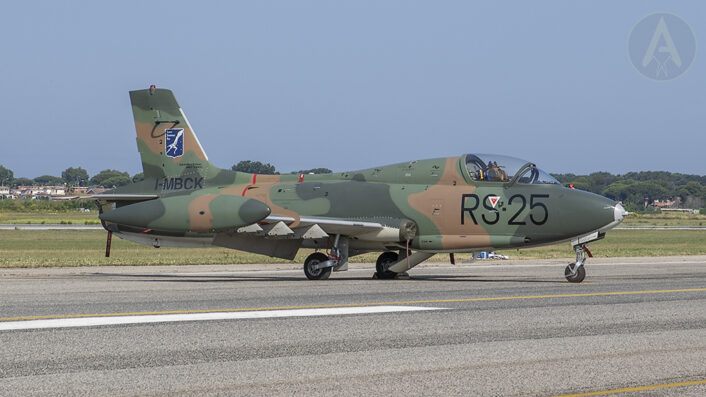
DC-6B (1962)
The Douglas DC-6B was the first aircraft of the Italian Air Force dedicated to VIP transport and long-range flights. The aircraft, among the first airliners after WW2, was first operated by civilian airlines and then transferred to the Aeronautica Miitare. The DC-6, also known as C-118 Liftmaster in military service, was retired in 1981. The one seen flying at the airshow is the DC-6 of The Flying Bulls.
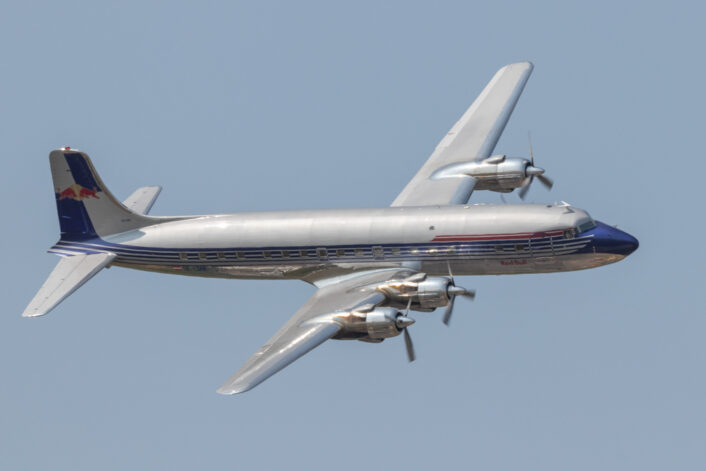
F-104 Starfighter (1963)
The F-104 Starfighter was the cornerstone of the Italian Air Force from 1962 to 2004 (with final flight in 2005) and, for this important occasion, it flew again in Italy after almost 20 years since its retirement. The aircraft, which now belongs to Starfighters Aerospace and sports the FAA serial N991SF, is the former Italian Air Force TF-104G-M that operated for more than 30 years as MM54258 with the 20° Gruppo (Squadron), the Italian F-104 OCU (Operational Conversion Unit) based at Grosseto.
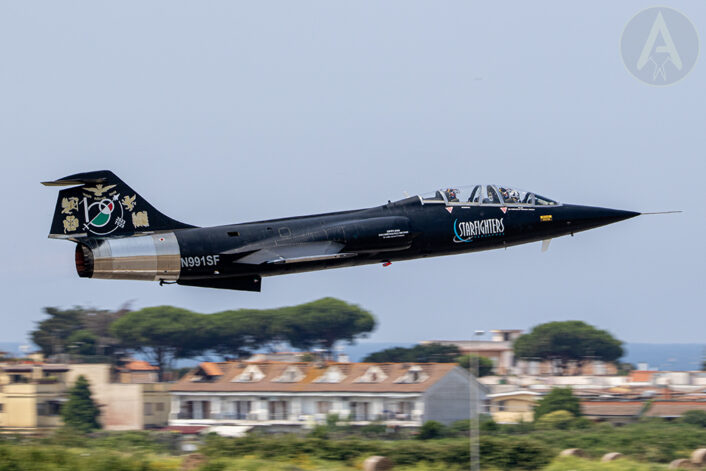
The aircraft, piloted by Piercarlo “Capone” Ciacchi, Director of Flight Operations at Starfighters Aerospace, and Rick Svetkoff, President and CEO of Starfighters Aerospace, was one of the highlights of the show and awaited by many aviation enthusiasts.
Visualizza questo post su Instagram
Visualizza questo post su Instagram
Heritage formations
The historic aircraft also flew with aircraft currently in service in two heritage formations. The first formation was composed of fighters from the second to the fifth generation: the F-86 Sabre, the F-104 Starfighter, the F-2000 Typhoon and the F-35A Lightning II. On Saturday, however, the formation had to fly without the F-104, as some problems prevented it to take part in the daily flight program.
What a crazy formation!!!!! How many fighter generations in one shot! pic.twitter.com/Uzjf3uV6B3
— David Cenciotti (@cencio4) June 18, 2023
Visualizza questo post su Instagram
Visualizza questo post su Instagram
The second heritage formation was focused on the air-to-ground mission set, featuring the G-91R, the AMX (A-11B in the MoD designation) special color to celebrate the 80 years of the 103rd Gruppo, and the Tornado ECR (EA-200C in the MoD designation). Both formations performed multiple passes in different positions, before completing their performance with a formation break and solo high-speed passes.
